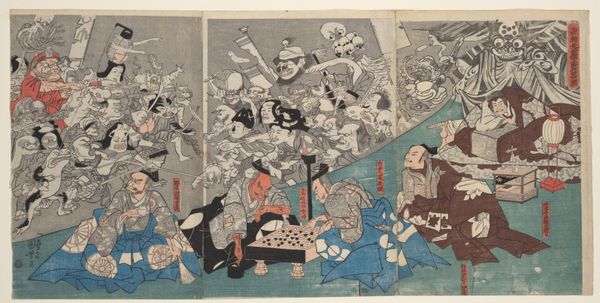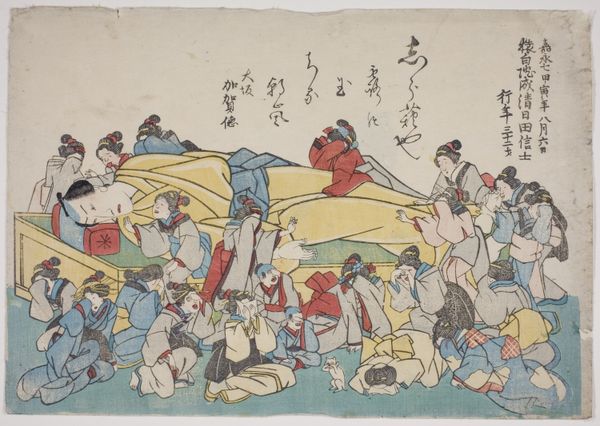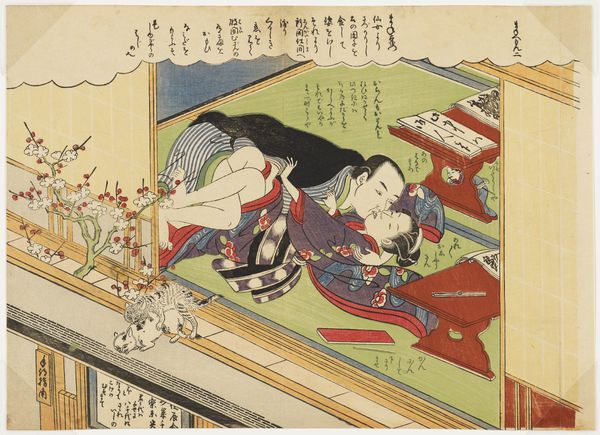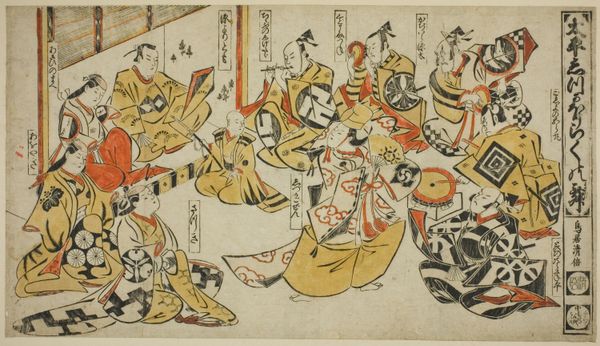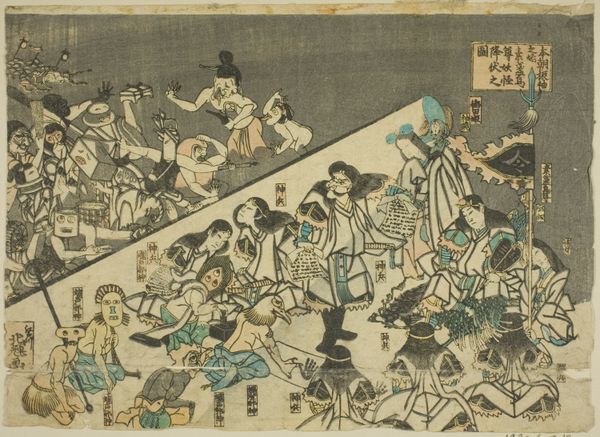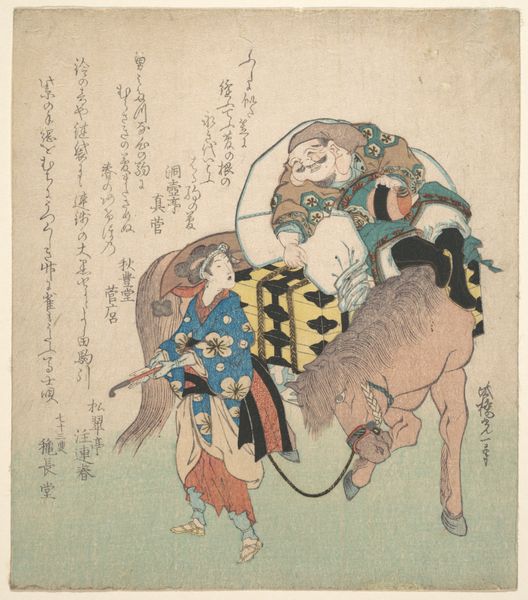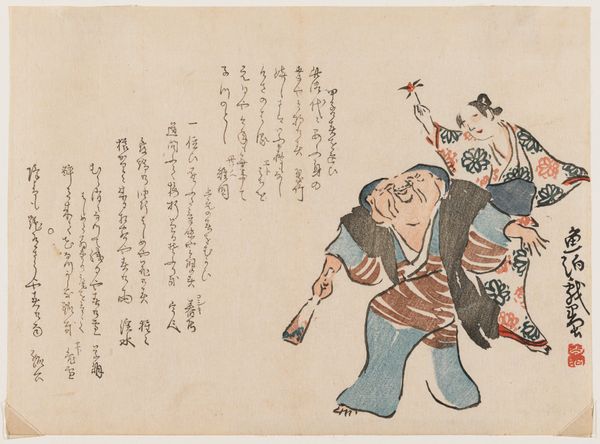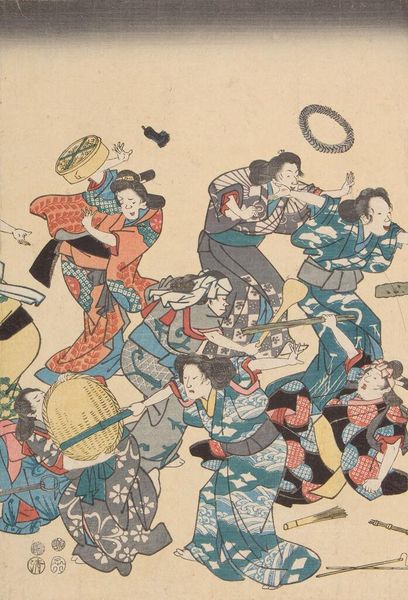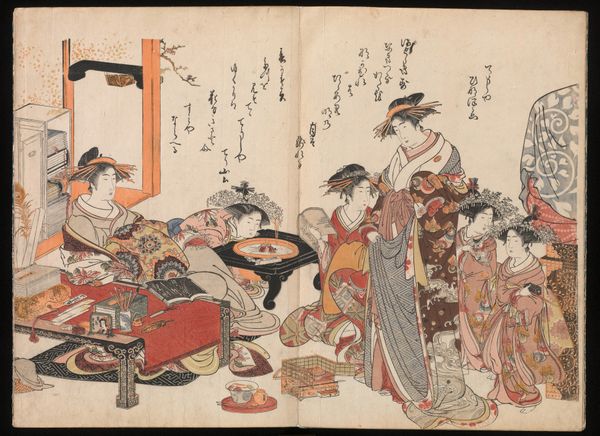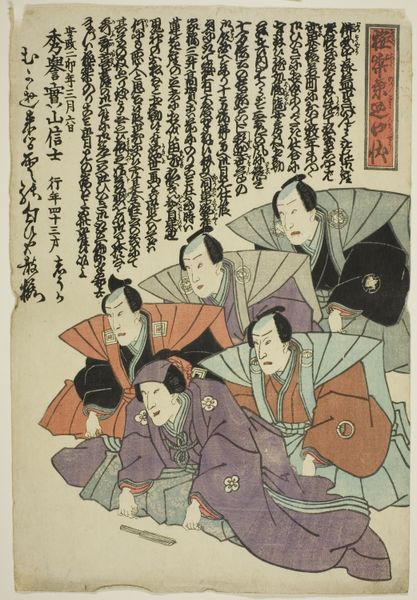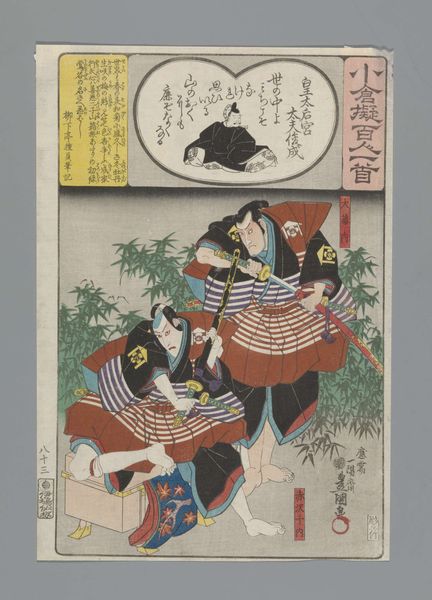
drawing, print, ink, woodblock-print
#
drawing
#
narrative-art
# print
#
asian-art
#
ukiyo-e
#
figuration
#
ink
#
woodblock-print
#
mixed media
Dimensions: 36.2 × 50.6 cm (14 1/4 × 19 15/16 in.)
Copyright: Public Domain
Curator: Look at the frenzied scene! "The Death of Ichikawa Danjuro VIII," created in 1854, employs a striking mixed-media approach incorporating woodblock printing, ink, and drawing. What’s your first impression? Editor: It's utter chaos! Everyone's running amok. It’s almost comical with its sheer frantic energy, yet there's an undercurrent of dread too. The composition, while packed, leads my eye right to that red demon figure—like a nightmare come to life. Curator: That "nightmare" is deeply rooted in Japanese theatrical tradition. This ukiyo-e print illustrates the suicide of Danjuro, a Kabuki actor who overdosed; to sidestep censorship laws that forbid the printing of current events, his passing is stylized through a demon chasing his courtesans and attendants as he, unseen, descends into the underworld. The red figure symbolizes both death and a specific character within his repertoire. Editor: So it's not just random monstrousness; it’s loaded! The use of color must be symbolic too, especially the red. And it almost seems like a visual paradox—such stylized terror is so captivating! Are we drawn to spectacle more than grief, then? Curator: In Japanese art, red often signifies passion, vitality, but also danger, destruction. By merging Danjuro's demise with folkloric demonology, the print immortalizes his artistry while meditating on mortality. The scattered women, rendered through graceful lines, amplify the tragic event with their desperate flight, underscoring impermanence. Even the text contributes, providing narratives and adding a literary dimension that encourages decoding the event as spectacle, news, and theatre all in one. Editor: What a poignant blend. A celebrity's actual tragic suicide cloaked as theatre…it makes you ponder performance—how we craft narratives and public images, even now. It asks, doesn't it, whether real suffering turns into mere spectacle viewed from a distance, like this? The raw agony made beautiful – that’s stuck in my head. Curator: Precisely. It urges us to acknowledge the layers inherent in representation, remembrance, and spectacle—elements still quite palpable, after all this time. Editor: Absolutely. Thanks, this was insightful; I definitely have a renewed appreciation.
Comments
No comments
Be the first to comment and join the conversation on the ultimate creative platform.
